Choose the Right Incubator
Choosing the right incubator is an important step in having a successful chick hatch rate. An egg incubator is a unit that is designed for the agricultural purposes of hatching poultry chicks. Hatching is essentially the process of getting chicks from fertile eggs. It is called a process because it entails factors such as humidity, time, regular turning together with temperature. For instance, the hatching of a chicken egg requires a relative humidity of 50% for most of the time and 65% to 75% for the last three days, temperatures of 99.5 degrees F together with occasional turning for 21 days. This process of hatching is also referred to as incubation hence the name incubator. Selecting an egg incubator needs some knowledge.
In a nutshell when you buy an incubator, you should consider:
Price
There are more expensive brands out there, but it’s not worth the extra $200 just so you can get a 100% hatch rate as opposed to 90% with a brand. Personally, I usually buy Brinseas. They are the “Cadillac” of incubators in my opinion, and I’m fortunate to be able to afford them.
Manual or fully automatic control
In choosing the right incubator, I always prefer automatic turning incubators. Everyone does. You have to remember to turn the eggs by hand twice a day, and it takes time. With a automatic incubator the the eggs are turned at the right time, and you just add water every couple days. Automatic units will save you lots of time and loss. Purchasing a unit that has in-built thermostats will help in automatic regulation of temperatures. Fans also come in handy to help in the even distribution of heat hence uniform temperatures within the whole unit. In built thermometers and hydrometers also help in automatic regulation of temperatures and humidity. Automatic turning of eggs also enhances for accuracy and efficiency. It is worth going for a unit having an LED display system and high/low temperatures/humidity signals for easy setting, controlling and reading.
Size
Size is also really important to choose the right incubator for you. There are different sizes of egg incubators having different capacities ranging from three eggs to hundreds and hundreds of eggs. As a beginner, it is worth going for the smaller units rather than the big ones used by the seniors in the field. Most people only need a single small incubator, like a Mini Advance, which holds 7 eggs. As you improve, you can move on to the more complicated and big units that have features which include passive heat chambers and sensors which control rotations as well as regulation of the temperature as well as the humidity. To be more successful in your production, you need to understand the different settings together with seasonal changes in humidity before you can go for the large systems. In fact, learning is fun as the small units mostly have windows that enable you to view and follow your project step wise. Windowed units tend to be slightly more expensive than the fully enclosed units are. However, the process of viewing is worth every penny. While the cost of the incubator is a factor in choosing one, it should not be the major factor. In the long run, you may end up realizing that the cheap units may ultimately be more expensive to run, especially if the rate of egg hatch is low.
Forced Air and Still Air
Under this category, you have two options of incubators you can choose from and these are the fan forced and the still air incubators. Just as their names suggest, the fan forced incubators are those that have fans aid in the circulation of air within the incubator and around the eggs. On the other hand, the still air incubators just directly work with the temperatures above the eggs. The fan forced incubators tend to be superior to the still air incubators. This is because the former ensures that there is an even distribution of fresh air, temperature and humidity.
Other Accessories
The idea of forced air is such a nice concept that you are advised to look into while searching for an appropriate incubator. However, this is not enough; thermometers and hydrometers are also needed if accuracy is to be achieved. This is because the instruments mentioned above are the only ones responsible for accurate recording of temperatures and humidity, two very important incubation features. In case of an extreme in any of these two, the efficiency of the unit is reduced to almost zero.
Materials
Materials are usually what you judge an incubator on. Hard plastic is fantastic, and that’s what the best incubators are made out of. Others made out of styrofoam or cheap plastic work, but not usually very well. And the styrofoam ones can be difficult to clean.
Ease of cleansing
In choosing the right egg incubator, you will want to consider how easy it is to clean. Hatching eggs is nice fun however cleansing up afterward isn’t. Apart from the mess that is created throughout the hatch, you may notice that because the chicks dry out, there is plenty of fine fluff that gets into each very little corner, behind each bit of mesh that stops you from golf shot your fingers within the fan (in forced air incubators) and all over else that is inaccessible. You would wish to scrub and sterilize your brooder between hatches since microorganisms multiply unbelievably quickly at incubation temperatures. And it does not take a lot for your eggs to become unhealthy and even explode.
Energy Used
Incubators don’t use a huge amount of energy, so for most people it doesn’t matter, but maybe your house runs on solar panels and you have a limited quantity of energy. This is another reason you should buy egg incubators which have low power consumption (usually < 45 watts).
Mode of Application
There are both manual, semi manual and automatic egg incubators. The prices of incubators are highly determined by these features with the automatic ones being the most expensive of the three. The automatic ones are the most recommended incubators of the three. Going for the most accurate automatic incubators that have the lowest possible degree of errors will give you easy time during the incubation period. It is also worth knowing the type of energy source needed and if your region can offer that. Do not buy an AC unit if your region is not yet connected. Instead go for the DC ones that can be battery operated. In addition, do not go for the American standard incubators made for the American market while the power supply in your region is based on the UK system.
The Intended Use of the Incubator
There are different uses or rather purposes an incubator can be bought for. Although, primarily, all these reasons revolve around incubation and hatching, what you need to do with it will determine the type of incubator to go for. Do you want an incubator for: educational purposes, laboratory setting purposes, novices, subsistence farming or for big commercial production. These will determine the type of incubator to go for, size of incubator to go for, the portability of the incubator to buy and the price of incubator you want to buy, etc… In a nutshell, it is very illogical to buy a 100- egg incubator or even a 50-egg incubator for educational or laboratory setting purposes. The most ideal size for such purposes is the incubators that have a maximum capacity of ten eggs. A three-egg incubator will do for such purposes. On the other hand, it is illogical to buy a 50-egg incubator when your dreams are to be the major chick and chicken producer in your area. Go for those incubators having a capacity of 500 and more.
Choose Eggs for Hatching
Are you thinking of raising your own backyard chicks but you are not certain on how to start. One of the best ways to go about it is by the use of an incubator. A good incubator is always the first thing to success in hatching and raising young chicks to maturity and choosing the right eggs for incubation is another. If at all you plan to use eggs laid by hens from your own flock, this will not become a big problem, as it would be if you want to buy eggs from other sources. This is because you probably take good care of your own fowl and also know the hens that hatch the most eggs. However, when you relay on someone else’s chicken for production, you need to have some facts at your finger tips. Below are some of the points to consider while looking;
1. The Source Should Be Checked
Because you are not using eggs from your own farm, going for eggs from the most reliable sources is the first step to buying the best eggs for your hatchery. Buying these produce from sources such as Craigslist and eBay is never a wise idea, as sellers tend to sell anything and everything in these sites. An independent local breeder is the most ideal.
If it is possible, go extra miles to see how the breeder keeps his flock. The best chicken that gives the best eggs for hatching in an incubator are those that are active and in free range healthy environments. They should be fed with the most appropriate diet – more natural produce than processed and lay well-formed, clean and strong eggs. Governmental agricultural institutions tend to have very good reputations in this subject and any agriculturally related subjects. Buying eggs for incubators from them is therefore a big step indeed.
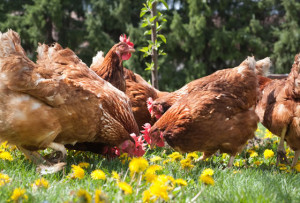
What to Avoid and What to Do
- It is quite risky to buy eggs for incubators from major online sites such as Craigslist and eBay.
- You should not buy the eggs from a good breeder by post; this must be your last option since it is better to pick them up yourself. But if you do, ensure they are labeled “Fragile.”
- If mailed, let the postal staff know that you are expecting the eggs and they should call you immediately when the eggs arrive at the post office so that you can collect right away.
- Eggs that have traveled have to rest for at least 12 hours before they can be put in the incubator. Remove them from the package and place them with the pointed end facing downwards.
- Fertile eggs should be stored in a cool and relatively moist but not cold environment
- The choosing of fertilized eggs for an incubator needs to be done as soon as possible after laying.
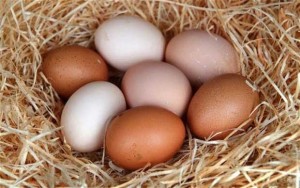
2. Check and Confirm the Age of the Egg
How old can a fertilized egg be before it is unlikely to hatch? Ideally, fertilized eggs need to be put in an incubator within seven days from the day they were laid. After this duration, fertility rates start to drastically drop thereby reducing the rates of eggs hatched. With proper storage, you can still achieve a hatching rate of 45% after three weeks of storage. This is not good enough as the percentage should be around 95% within the first seven days of lay.
3. Checking the Eggs is the next step
Eggs that have been sent via post or traveled long distances often have their air cell detached as a result of jolting while en route. Such eggs have a poor rate of hatching. If you have not yet bought such eggs, do not buy them. However, you can still try them as their hatching percentage has not been reduced to zero. If you candle these eggs a few days into the incubation, a saddle shape will be seen at the blunt end, indicating that the air cell is detached.
Choosing from a group of eggs requires that you select the normal-shaped ones only. If the egg looks too long, its pitted or rounded at either ends, forsake this for a better shaped egg. An exception is given to the Maran eggs that tend to be round on both of its ends yet have good hatching rates.
A beautiful Black Copper Maran egg – it is quite difficult to tell the difference in its ends!
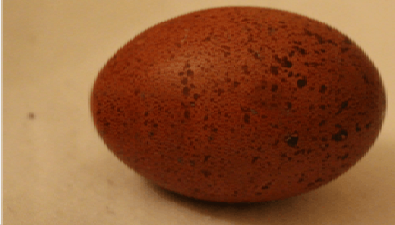
Shell Abnormalities
The shells of the eggs must also not have any abnormalities. Eggs that have ridges, those that are overly round and those that are not very egg shaped must be discarded.

Strange eggs that you would not want to incubate.
- Eggs with cracks must be discarded as these can never hatch even if you try to fix them. Instead, there is always the risk of incubator contamination by bacteria in the cracks.
- Relying on naked eyes to see cracks is not adequate as you may end up missing some of the hairline fractures. A bright light underneath your egg or a candling device are the most appropriate ways of observing for cracks.
Eggs that are too porous are not the best for incubation. Though some will hatch, the rate of hatching is highly reduced.
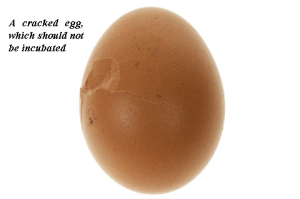
Egg Size
Average size eggs are the best to be chosen for incubation. Too large eggs at times contain double yoke while too small eggs might either lack a yoke or have less developed yoke. A Candler can be used to check these for quality and size of yolk. The average chicken incubation eggs should weigh between 2.0 and 2.25 ounces (53g and 63g).
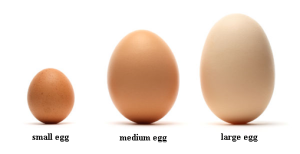
Conclusion
You need to select incubating eggs that are as clean as possible. Though sanitation does not determine the fertility of an embryo, it affects the ultimate results. A dirty egg is a potential hazard to the incubator as it is a great potential for bacterial contamination. This has potential fatal effects to the growing embryo and can transfer such negative effects to adjacent eggs hence reducing the efficiency of the unit.
Various cleaning options are available with each cleaning option highly depending on how dirty the eggs are. If something minor such as soil is stuck on the surface, you can scrap this off by the use of a fingernail. This ensures that the outside of the eggshell is left intact with a waxy “bloom” (that protects it against bacteria).
A dry scraper can also be used to gently scrape the shell. However, this offers the potential of cracking the egg or forcing the bacteria in to the egg via the shell pores rather than removing them.
Gently washing the dirty egg with warm water makes it clean enough to go in to the incubator. The egg can be gently washed with warm water if it still looks dirty. A special egg washing disinfectant or tepid to warm water (never use cold or very hot water) is used in cleaning. Some people use diluted bleaching agents – this is highly discouraged.
When all this is done, your hatching eggs can be taken into the incubator.
I have all hens and no rooster if a get an incubator will my egg hatch or do I need to get a rooster
You would need to get a rooster or purchase fertilized hatching eggs. The eggs need to be fertilized in order to have the potential to hatch.
Really? You know about the birds and bees, right? The eggs need to be fertilized.???? So yes, you need a rooster.
no, they wont hatch.
…u have to get them a rooster.
I had no idea that there were so many things to look into before choosing an egg incubator. I appreciate the information about cracked shells and abnormal shells. I think that those things are important to know when you have an incubator to make sure that the rest of the eggs can hatch correctly. Also, I think that it would be important to make sure that you know how to work it before you buy it.
Thank you for your comments. Instructions for usage come with the product. I’m sure that laboratory type incubators used for purposes other than chick hatching are far more complicated.
Knowing how incubator work is a great consideration before buying it .You need to know how to clean the incubator,how to control the humidity and temperature level etc.You can get manuals from the manufacturers of the incubator or do some research online.
Jeanne, thank you for stopping by. We are a long way from Nairobi.
That was useful ! Thanks !
I need to know the size of an incubator I should buy for 12 hens. We are a small start-up hatchery in the Peruvian jungle.
It depends on how many eggs you want to incubate at a time. If you can preserve the eggs for, say, five days, and the hens each lay an egg a day, you would have 60 eggs accumulated during that period. If you check for cracks, imperfections, cleanliness, etc., you might reduce that by a few, so that you might have 50-55 eggs to incubate. Then you could use a 56 egg incubator such as the Brinsea 56 egg automatic incubator. There are other less expensive ones, but I am partial to Brinsea because they tend to be more reliable. However, that will only get you 50 or so chicks every 21 days. If that works for your market, that would be good. But if you need to hatch more chicks at a time and can preserve them for 10 days or more, Brinsea’s OVA-Easy Cabinet incubator for either 100 (https://amzn.to/2KKdRJA) or 190 (https://amzn.to/31SGEkT) eggs may be your best bet. There are other larger incubators on the market, but I am not as familiar with them as I am the Brinsea brand. Does that help you?